Пловдив до Банско…..Plovdiv to Bansko
Posted by asuasu69 on Dec 18, 2012 in Bulgaria | 2 commentsWe had planned to stay in Plovdiv, Bulgaria’s second largest city, for two nights in order to do some grocery shopping, before heading to the ski village of Bansko by train early the following morning. However, after reading some brochures we learned there was a free afternoon walking tour (donations gladly accepted and given though) around the old city and Roman ruins. The tour is conducted by students who simultaneously share their love of the city’s history and get to practise their English skills.
Therefore after a big morning grocery shop (to avoid the high prices up in the ski village and get some staples like cornflakes that are hard to find in smaller centres) we headed back into the main pedestrian street after lunch to meet up with Chris – our guide for the afternoon’s two hour or so walk. Besides us, the only others on the tour was a young Bulgarian fellow and an elderly Bulgarian gentleman who coincidentally was heading to Australia in January to do some study and wanted to come along to hear and practise his English! He was excited to discover we were from Australia we were only too pleased to offer some advice – he was very happy to hear that he was arriving in Melbourne a couple of days before Australia Day.
Plovdiv is truly an ancient city, much older than Rome or Athens, with some arguing that it is the longest continually inhabited city in Europe; evidence of Neolithic settlement dates back over 4000 years. It’s a city upon layers of cities – it has been a Thracian and Greek city, conquered by Philip of Macedonia (father of Alexander the Great), then back to the Thracians under the Roman Empire, a stronghold for Bulgarians, conquered by Byzantium, back to Bulgarians, settled by Slavs, taken over by Turkey and part of Ottoman Empire, and was under communist rule during the cold war years. The end of communism only came to Bulgaria in 1989 and Plovdiv was the place of major demonstrations for democratic forces in the country.
There are many reminders of Bulgaria’s communist rule still scattered around the city. Statues, monuments, and those attractive (not) communist office and apartment blocks are everywhere in the suburbs surrounding the old city. A walk through one of the city parks led us past a group of elderly men involved in a lively discussion – we were told they were talking politics and it reminded me a bit of Speakers Corner in Hyde Park, London. Another group of the men played their chess game and this looked like a very regular and common occurrence.
We were surprised to discover there is a complete Roman Hippodrome still buried beneath the mall and buildings in the city centre (only the small part of the northern section is unearthed and lying open for viewing). The ancient stadium could seat 30000 people and measured 240 m x 50 metres. The curved seating at the end of the hippodrome has been unearthed and a stage constructed in front of it for local performances. As the ancient seating curves back around to join the straight sides, it disappears beneath the buildings which have been constructed on top.
We walked back through the old city (close to where our hostel was) passing under more of the wonderfully restored traditional Bulgarian buildings to see the Plovdiv Roman Amphitheatre that was only relatively recently discovered.
The Roman Theatre was built on the side of a hill, orientated south toward the ancient city and mountains in the 2nd century. Damaged by Attila the Hun in the 5th Century it was only rediscovered after a landslide in the 1970’s resulting in major archaeological excavation and removal of the earth that was harbouring its secret. In the building behind us was a music school and the sound of student’s practising wafted over us as we were told how the amphitheatre is regularly used for live art performances.
Our guide also enlightened us a little on the Bulgarian language – which is a Slavic language using the Cyrillic script. Having never been to any Balkan and Slavic countries it was my first experience of the Cyrillic Script and discovered that it was actually developed in the first Bulgarian Empire back in the 10th century and this Old Slavic language was considered to play a significant part in the formation of modern Russian which has evolved over the centuries and not the other way round as commonly thought. It was quite unnerving to not be able to read or understand much us as it didn’t have the English equivilent like many other countries.
If we had known a little more about this fascinating and old city before we arrived, we probably would have planned to stay longer…
Both nights during our stay in Plovdiv we ate at a local tavern beneath an art gallery only a short walk from out hotel. This was our first taste of the hearty meals which are served in the traditional Bulgarian restaurant/café called Meyhane (of Persian origin meaning wine house) also written as Mehana or механи in Bulgarian. An appetising fare of chicken giblets, sliced veal’s tongue in butter, and pork neck were on offer. We ordered the more conservative veal knuckles and chicken julienne, both of which were delicious. Of course, the staple vegetables potatoes and cabbages also feature in all good Bulgarian meals and are offered as an accompaniment or side dish which allow further sampling at a very good price.
By the time we arrived in Plovdiv, we had our hearts set on taking the relaxing and scenic train up to the ski town of Bansko nestled in the Pirin Mountains, and our final destination to see out 2012. We would spend the next four weeks Dec 15 – Jan 12 in a self-contained two bedroom privately owned apartment we had secured a couple of months previously.
We already knew the train journey would be in two stages: Plovdiv to Septembrvi on the main Plovdiv – Sofia line, followed by a change to the smaller narrow gauge train for the journey up into the mountains. (Don’t forget you can see our route by clicking on Itinerary and Map under Start Here on the main menu bar, and zooming in).
In all, the train trip was scheduled to take about 6 hours compared to about two hours via bus or one hour by taxi. We had heard stories of the insane driving by the local taxi drivers, and this did not appeal to us especially on the icy, winding mountain roads.
Our journey is not about ticking off more countries (we move too slow for that) or packing the most sights into one day (we are probably too lazy for that!) or getting to somewhere quick – that is for people on a 7-day package ski trip or for our normal ‘annual leave’ holiday’s. This trip was all about taking some journey’s slowly, and on this particular day, to appreciate the view and really watch the changing scenery and daily life on a small train that services little out of the way villages.
The train was not something that could be pre-booked and in winter we certainly didn’t fear it would be full but just meant that had to wait until we got to Plovdiv to make more enquiries and double check times.
We were surprised when the woman on the front desk at our hostel was not at all keen on our idea of taking the train, and actively discouraged us saying the trains were ‘old and dirty’ and suggested we take a taxi (for 100 Euro) or bus. We quietly chuckled and puffed out our chests. The idea of an old and dirty train did not faze us in the least, how bad could it be? We have travelled by train in India!
On reflection, her comments about the train were most likely due to the Bulgarian woman’s love of all things new and fashionable. For us, the train journey was another mini adventure and the most difficult part was always going to be purchasing the correct tickets.
We insisted the train was what we wanted to do and she begrudgingly rang the station for us to check the train times. She was looking at us like we were being irresponsible, especially considering we were travelling with children and I couldn’t help but feel a bit like a rebellious teenager!
We woke early the next day and the hotel had arranged two taxis to transport us and our ever growing number of bags containing ski clothing and equipment and groceries the short distance to the Plovdiv Central Train Station or Централна железопътна гара Пловдив.
I was treated to AC/DC music complete with video clip during my cab ride, and in no time we were standing inside the old (but clean) railway station. It was my turn to buy the tickets, and I had come prepared with destinations and key phrases written in Bulgarian by the hotel staff on a piece of paper to show the ticket officer, to hopefully make the whole process easier. In hindsight, I should have got everything written down – like 2 adults and 2 children would have been handy!
Despite their love of ‘80s music very few Bulgarians speak English, and the task did not go flawlessly as there were no English speaking ticket people to be found. Using sign language and the paper I had bought with me I was eventually rewarded with the right ticket (or so I thought). David had meanwhile had found an English speaking woman waiting for another train and on my return from the counter asked her to check the ticket (and then went back with me to the counter as it was only for three passengers and not four). Thankfully she also showed us to the right platform as the departure board was impossible to decipher not to mention finding the right platform.
We had read somewhere that Bulgaria is where ‘German trains come to die’, so were pleasantly surprised when a fairly modern train arrived at our platform and we loaded our bags aboard. On arrival into Septembrvi we followed our written Cyrillic script for Bansko (although either the train was running late or the times did not match what is published on the Railways website). We dragged our bags through the underpass marked ‘Банско’ and rounded a corner to find our train waiting patiently in a cloud of steam.
Ok, this train was older and the diesel locomotive looked like it belonged in a cold war spy movie, but the carriages were spotless, spacious, and heated. Although a diesel engine, the train carriage’s heating systems are charged with steam and it just adds to the atmosphere when the steam is billowing out from under the train and along the platform. We jump on the last carriage and spread out in our little section, stowing our bags and settle in for the journey.
Bulgaria’s only remaining narrow gauge train line (760mm) runs the 125km between Septembvri and Dobrinishte (Bansko is one station before Dobrinishte). Its four carriages are pulled by a powerful German-built Henschel locomotive as it winds its way through the Rhodopi Mountains.
For the next five hours we enjoyed some of the most spectacular scenery and with an average speed of only around 30 – 40km per hour. It is not some high speed trip that rushes past in a blur – you really have time to see the countryside and take it all in.
We crossed back and forth over icy clear mountain streams, over river viaducts looking down on sweeping valleys, emerged from tunnels with views of sheer cliff-faces and curved around bends looking ahead on the carriages in front.
For some of the journey it runs parallel to the road and we watched the cars speed along the mountain road and felt that they were missing out. But for the most time we chug solo and just enjoyed spotting colourful bee boxes grouped together on snowy hills and horses with their furry winter coats gallop through the snow covered fields.
We stopped at villages along the way and watched the locals got on and off, some old ladies carrying really heavy bags of produce on their way to or from markets, and watched for the station masters waving their red and green paddle signalling it was time to continue on our way.
There were some interesting (read dodgy) ‘gypsy’ type people who got on our carriage at around Avramovo the halfway and highest point at 1257m. Looking rather like they were up to no good, almost like casing the joint, when the conductor came through at one point he obviously asked them to get off as they could not produce a ticket nor the money to pay for one. It took a couple more stops until they alighted and we breathed easy again.
We arrived in Bansko right on time and were met by Tosh, the Bulgarian man and local meet and greet representative for the apartment’s English owner, who drove us to our ‘home’ for the next month and where we would celebrate our first white Christmas!
Oh and the cost for our 6 hour scenic ‘Alpine Railway journey of the Balkans’?
A total of 25.80 Bulgarian Lev or $16.75 for all four tickets!
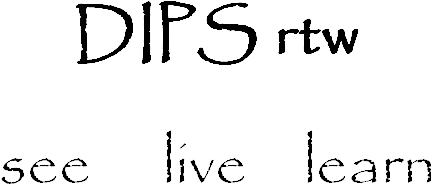
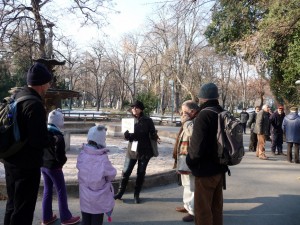
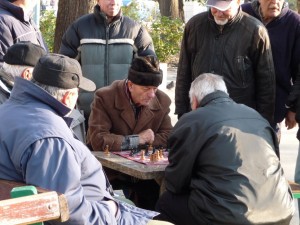
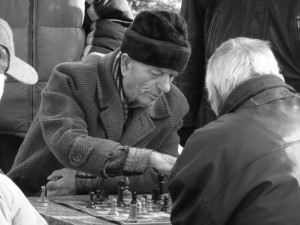
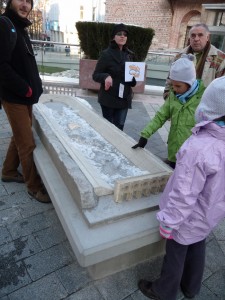
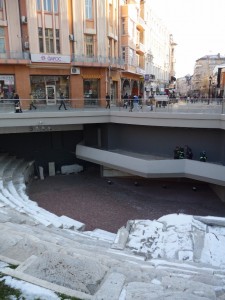
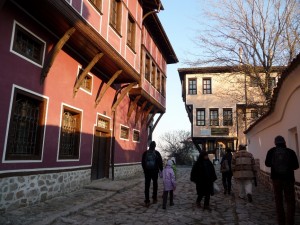
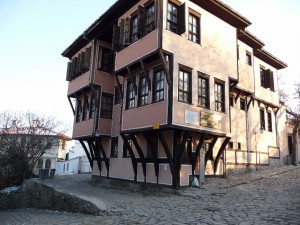
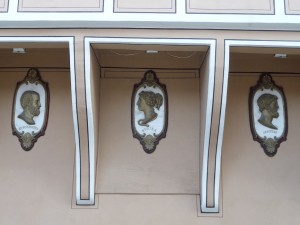
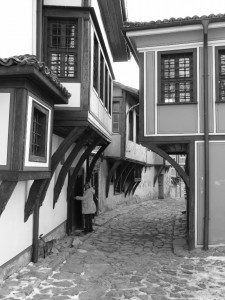
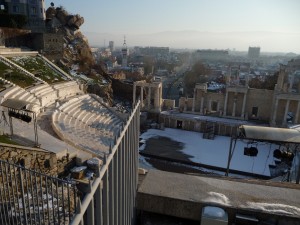
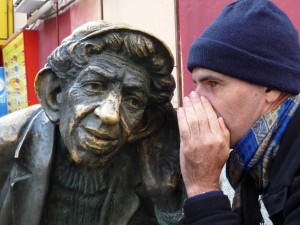
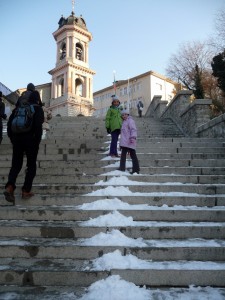
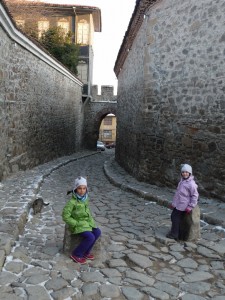
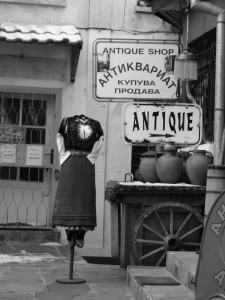
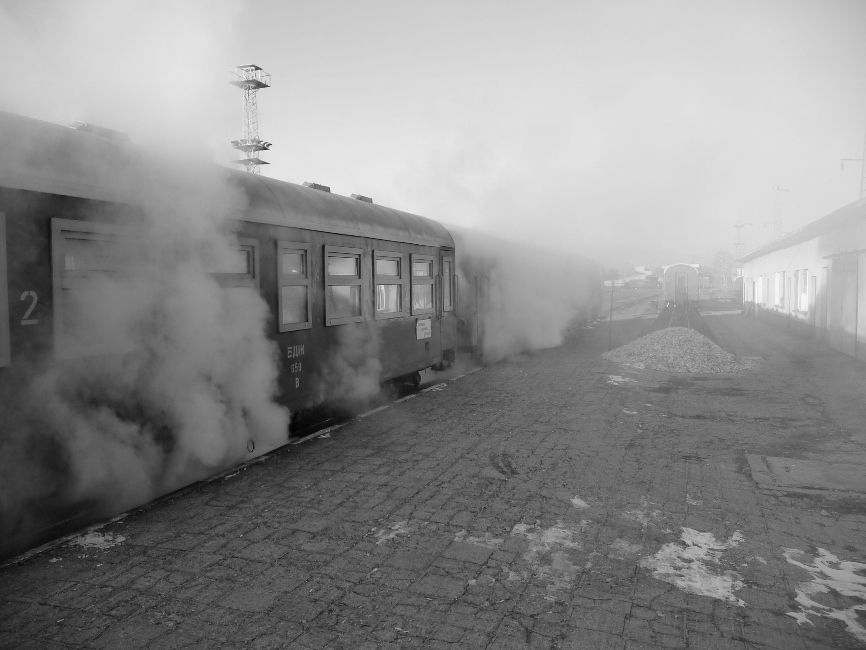
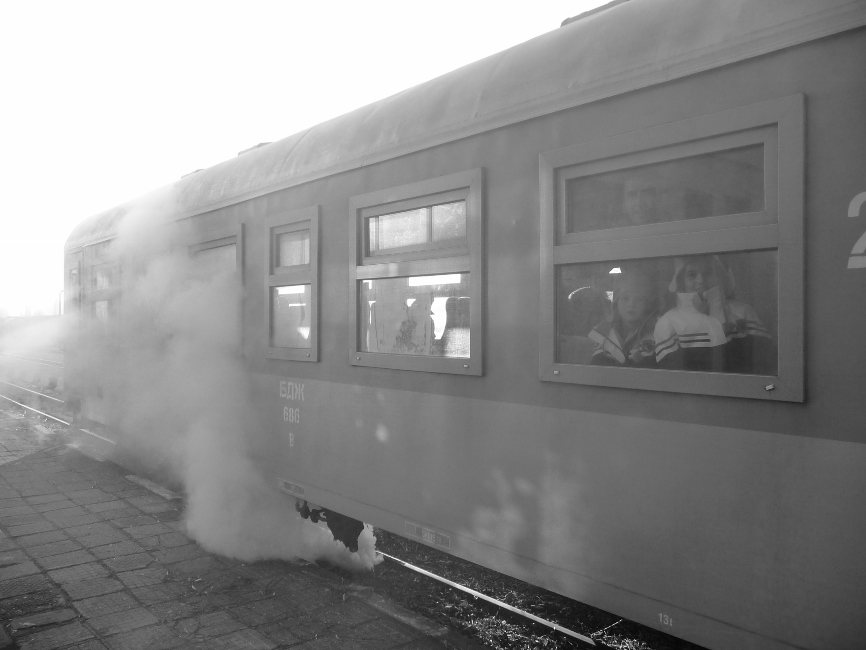
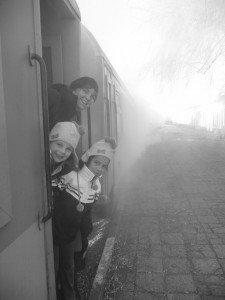
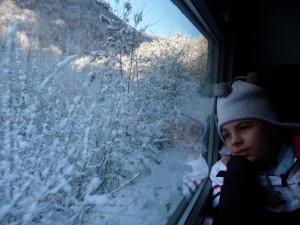
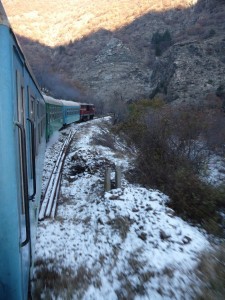
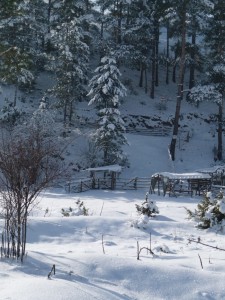
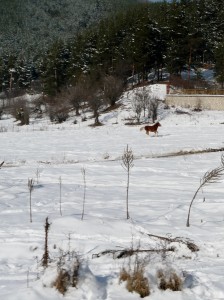
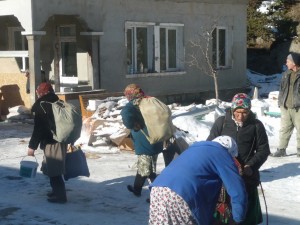
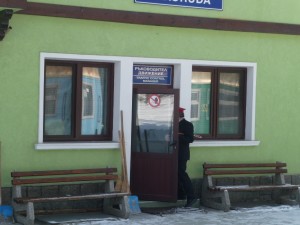
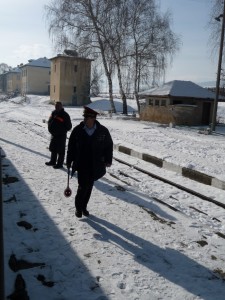
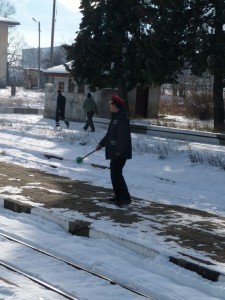
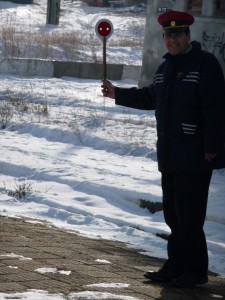
I love this !!! Take me with you …. 🙂 xoxo
Plodding old trains are such a delight in foreign countries. There’s time to see the countryside, and time to “people watch”. Lucky you!